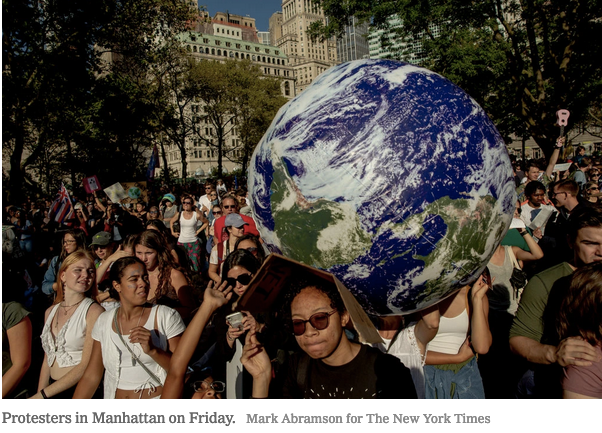UNITED NATIONS — This is the world we live in: Punishing heat waves, catastrophic floods, huge fires and climate conditions so uncertain that children took to the streets en masse in global protests to demand action.
But this is also the world we live in: A pantheon of world leaders who have deep ties to the industries that are the biggest sources of planet-warming emissions, are hostile to protests, or use climate science denial to score political points.
That stark contrast comes at a time when governments face a challenge of a kind they have not seen since the beginning of the industrial era. In order to avert the worst effects of climate change, they must rebuild the engine of the global economy — to quickly get out of fossil fuels, the energy source that the system is based upon — because they failed to take steps decades ago when scientists warned they should.
On Monday, at the United Nations Climate Action Summit, comes a glimpse of how far presidents and prime ministers are willing to go. The United Nations secretary general, António Guterres, expects around 60 countries to announce what he called new “concrete” plans to reduce emissions and help the world’s most vulnerable cope with the fallout from global warming.
The problem is, the protesters in the streets and some of the diplomats in the General Assembly hall are living in separate worlds.




